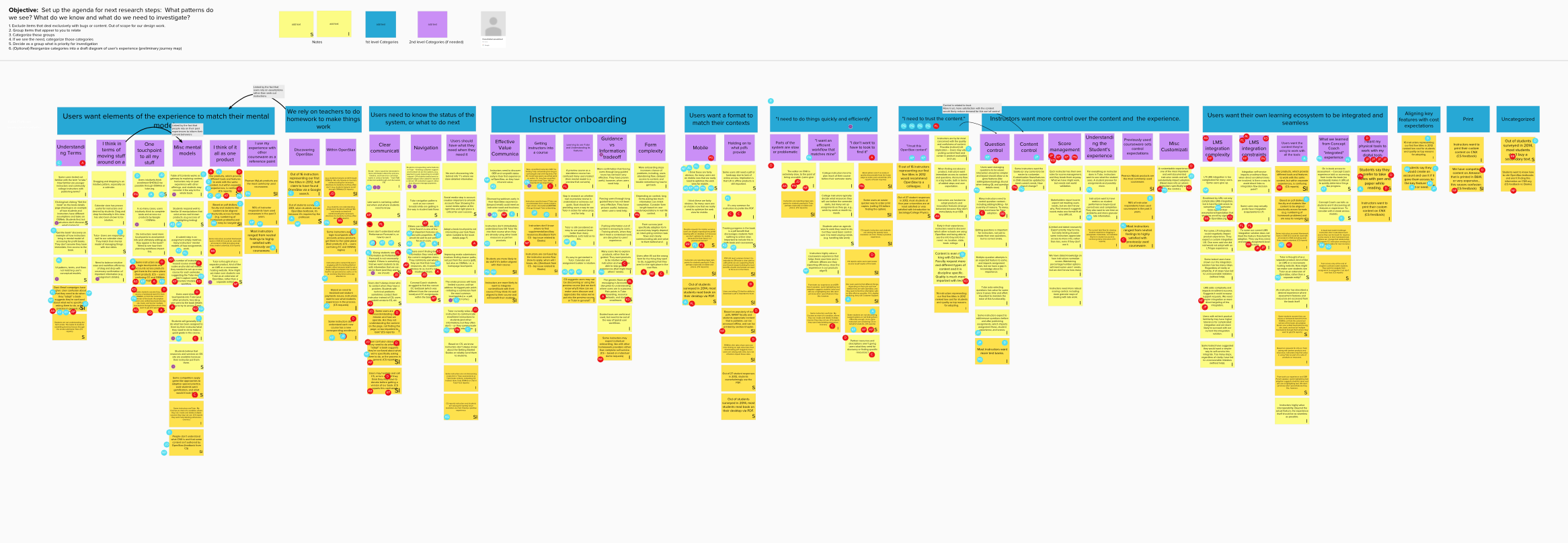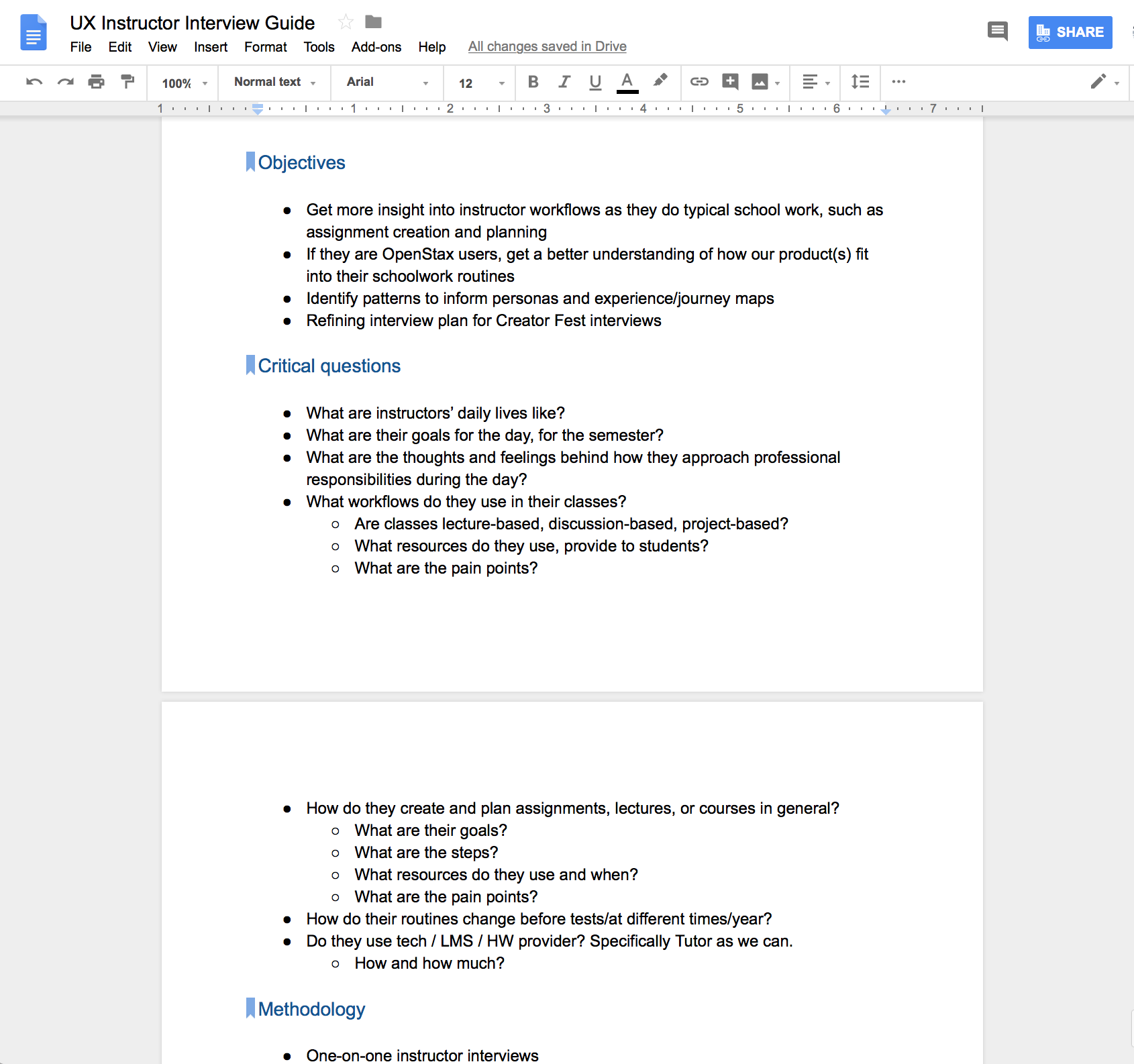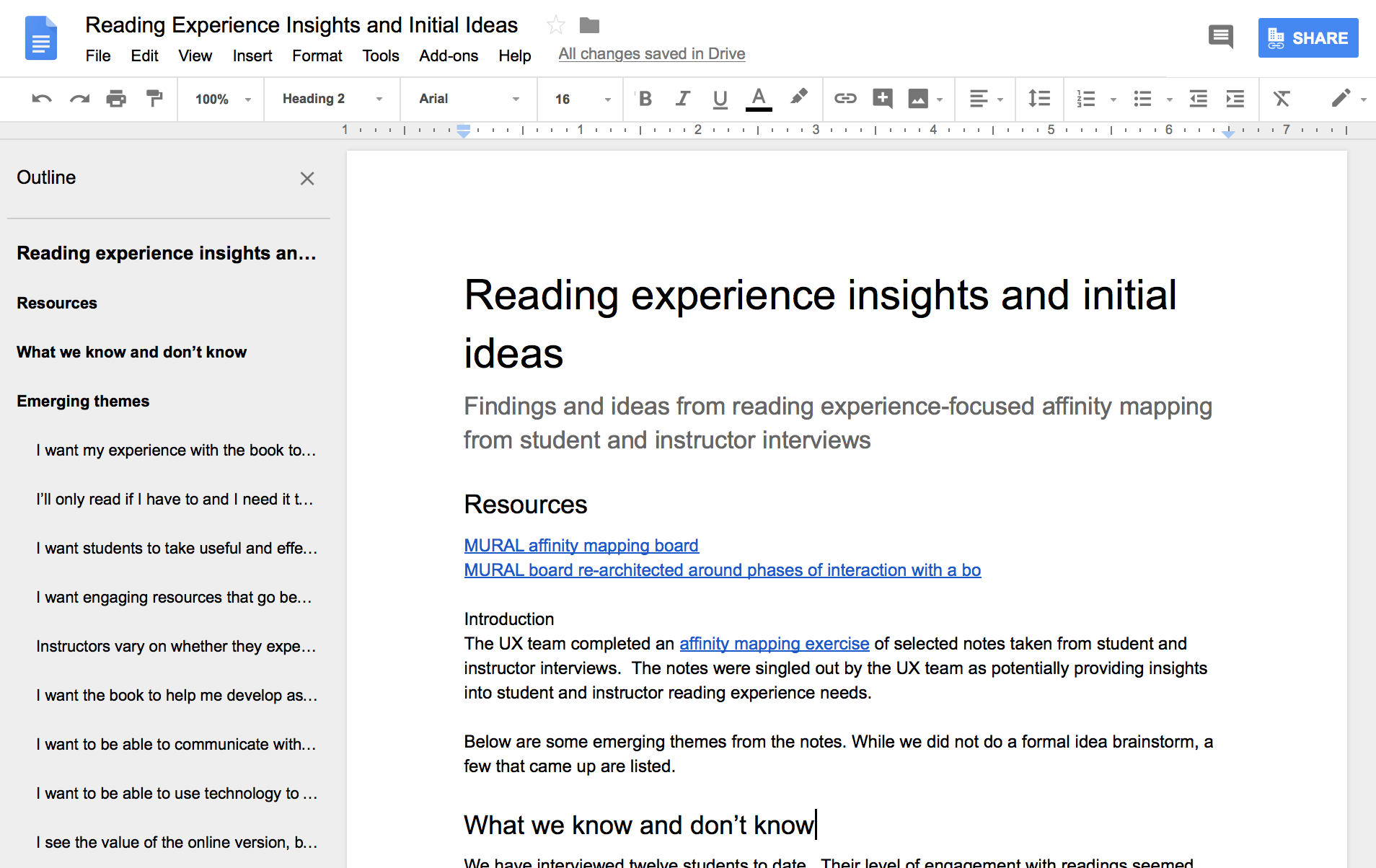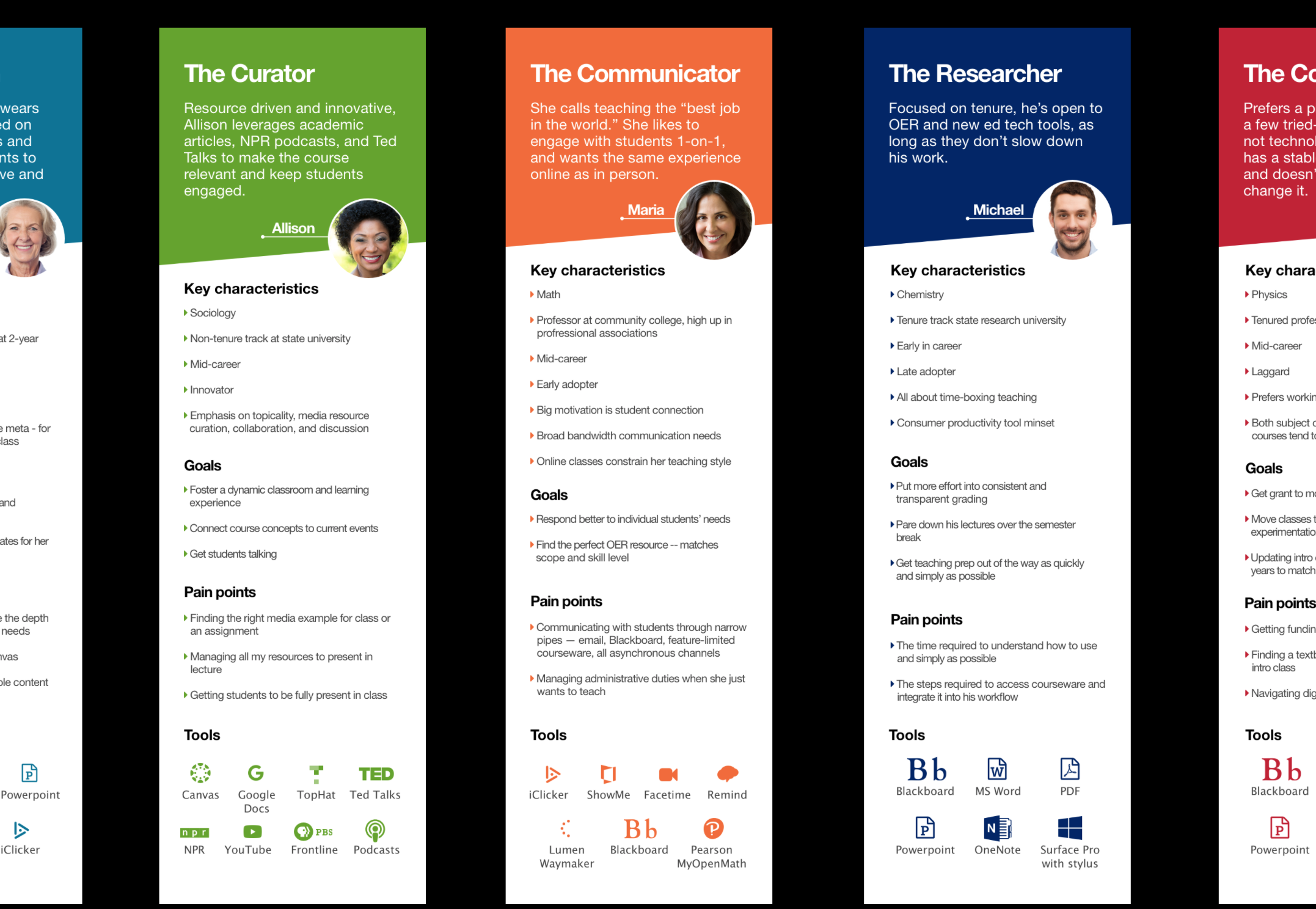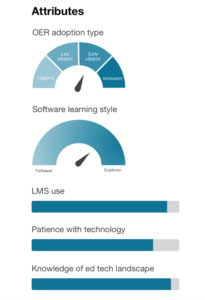Leading User Research at OpenStax
OpenStax wanted to make big changes to its product ecosystem. As UX research lead, I managed the team’s foundational research phase of this initiative. I was charged with assessing existing findings, leading instructor and student interviews, and generating synthesis docs such as personas, emerging themes docs, and experience maps—all while collaborating with a larger distributed project team.
What I did
1) I consolidated notable research to date across departments, pulling out and organizing data with UX implications.
2) I led the UX team in an affinity mapping exercise on a MURAL board to cluster data together into a hierarchy of categories.
3) We then presented the map to the larger project team. We structured discussions by asking members to place dots on insights they felt provided opportunities or risks or both (What looks like a big opportunity? What makes you anxious?). The online MURAL board made the exercise feasible for the 14-member partially distributed team.
4) We used insights from the map and discussion to help focus instructor and student interviews. We interviewed 17 instructors– members of our Faculty Advisory Board and attendees at an OpenStax sponsored instructor event. I created and managed our interview guides and workflow.
5) The UX manager and I led interviews and brought data back to the UX team for debriefs using MURAL. I created a template (below) with which to organize data and insights.
6) I led the UX team in more focused affinity mapping exercises and documented emerging, high level themes.
7) I then built seven primary/secondary low fidelity instructor personas from our work, structuring and presenting the content in ways I think are useful when concepting and designing. Our UX visual designer refined the layout and added fidelity (some displayed below).
9) I created a set of instructor attributes that our team could use in design as a shorthand for a range of potential behaviors.
Next steps included student personas and using MURAL to consolidate student and instructor findings in experience maps, as I started here (this is in-progress and based on an early student persona draft).
Outcomes
- The UX team collected its most comprehensive user interview data set in three years.
- We collaborated more deeply on research than in past projects. Everyone was involved and had a say.
- Project team decisions grew more user centered and evidence based.
- The research facilitatied collaboration across a distributed cross-functional project team
- We developed a shared understanding of our instructors and emerging themes across the UX of our entire ecosystem.

